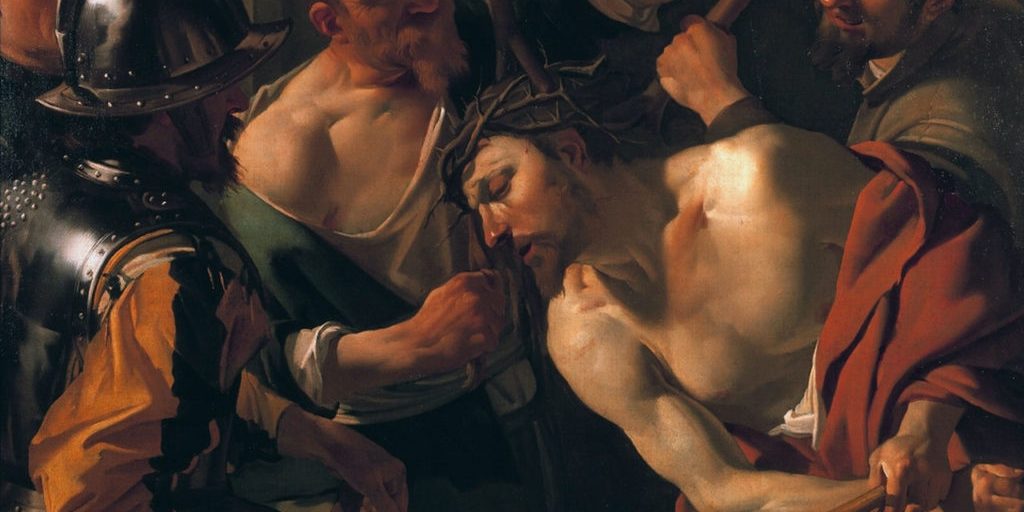
What Really Happened on the Cross? Part 1
The cross is the symbol and center of Christianity. As such, the nature of the cross and its effect always needs biblical clarification. In the newest issue of Credo Magazine, “The Glory of the Atonement,” Mike Riccardi explores the question, “What Really Happened on the Cross?” by examining five biblical themes: sacrifice, propitiation (part 1), reconciliation, redemption, and conquest (part 2).
Mike Riccardi has served on staff at Grace Community Church since 2010. He currently serves as the Pastor of Local Outreach Ministries, which includes overseeing Fundamentals of the Faith classes, eight foreign language outreach Bible studies, and evangelism in nearby jails, rehab centers, and in the local neighborhood. Mike earned his B.A. in Italian and his M.Ed in Foreign Language from Rutgers University, and his M.Div. and Th.M. from The Master’s Seminary, where he is currently pursuing his PhD while teaching as a Faculty Associate in the Theology Department. He also has the privilege of serving alongside Phil Johnson as co-pastor of the GraceLife fellowship group at Grace Church. Mike and his wife, Janna, have two children.
Here is an excerpt from part 1 of Riccardi’s article:
The atoning work of the Lord Jesus Christ on the cross stands at the very epicenter of Christianity. It is no exaggeration to say that the cross-work of Christ is the heart of the gospel. When the apostle Paul summarized the gospel he preached, he encapsulated it by speaking of the atonement: “Christ died for our sins according to the Scriptures” (1 Cor 15:3). The cross is the content of the gospel itself, for “we preach Christ crucified” (1 Cor 1:23). The gospel message by which we are saved is “the word of the cross” (1 Cor 1:18). The eighteenth-century slave-ship captain turned Puritan preacher, John Newton, captured it well when he said, “I advise you by all means to keep close to the atonement. The doctrine of the cross is the sun in the system of truth.”
One way to “keep close” to the atonement is to ensure we understand precisely what happened on the cross. We’re likely familiar with the events of the crucifixion, but the significance of those events is so boundless that it will be the theme of the saints’ praise for eternity (Rev 4–5). Despite this, there has been, historically, and there is, today, great confusion concerning this central and essential doctrine of the Christian faith. We must, therefore, ask of the text of Scripture, “What really happened on the cross? What is it that Jesus has accomplished in His work of atonement? What is the biblical significance of what our Savior has done on our behalf?”
 The most fundamental description one can give to the atonement is that it is a work of penal substitution. The cross is not a ransom payment to Satan; the chief captive of hell is in no position to demand ransom payments from God. The cross is not an illustration of God’s general moral government of the world. Still less is the cross God’s declaration of the value and worth of humanity, except as it testifies to the depth of our sinfulness. Neither is the cross merely a cosmic victory of good over evil or a good example for Christians to imitate. Most fundamentally, the cross is a work of penal substitution—the Lord Jesus suffering the penalty for the sins of His people as a substitute for them. In His great love, the Father appointed the Son to stand in our place, to bear our sin, to carry our guilt, to receive our punishment, and thereby to satisfy the righteous wrath of God against us.
The most fundamental description one can give to the atonement is that it is a work of penal substitution. The cross is not a ransom payment to Satan; the chief captive of hell is in no position to demand ransom payments from God. The cross is not an illustration of God’s general moral government of the world. Still less is the cross God’s declaration of the value and worth of humanity, except as it testifies to the depth of our sinfulness. Neither is the cross merely a cosmic victory of good over evil or a good example for Christians to imitate. Most fundamentally, the cross is a work of penal substitution—the Lord Jesus suffering the penalty for the sins of His people as a substitute for them. In His great love, the Father appointed the Son to stand in our place, to bear our sin, to carry our guilt, to receive our punishment, and thereby to satisfy the righteous wrath of God against us.
The Lord Jesus is the Suffering Servant who “has borne our griefs and carried our sorrows” (Isa 53:4), who “bore the sin of many” (Isa 53:12). On the cross, “the LORD has laid on him the iniquity of us all” (Isa 53:6), and so “he shall bear their iniquities” (Isa 53:11). He is “the Lamb of God who takes away the sin of the world” (John 1:29) by taking that sin upon Himself. The Father “made [Jesus] to be sin on our behalf” (2 Cor 5:21); our guilt was counted to be His. “Christ redeemed us from the curse of the Law, having become a curse for us” (Gal 3:13), in our place. “He himself bore our sins in His body on the cross . . . for by His wounds you were healed” (1 Pet 2:24). Simply put, “He was pierced for our transgressions; he was crushed for our iniquities; upon him was the chastisement that brought us peace” (Isa 53:5; cf. also, e.g., Mark 10:45; 2 Cor 8:9; 1 Pet 3:18; Gal 2:20). Penal substitutionary atonement is woven into the very fabric of God’s revelation from beginning to end because it is the very heart of the gospel message.
But we ought to press further and ask, “What precisely is the character of this substitutionary atonement? What exactly did Christ accomplish on the cross?” Scripture answers with at least five themes, or motifs, of the atonement: (1) it is a work of substitutionary sacrifice, in which the Savior bore the penalty of sin in the place of sinners (1 Pet 2:24); (2) it is a work of propitiation, in which God’s wrath against sinners is fully satisfied and exhausted in the person of their substitute (Rom 3:25); (3) it is a work of reconciliation, in which sinful man’s alienation from God is overcome and peace is made through the blood of the cross (Col 1:20); (4) it is a work of redemption, in which those enslaved to sin are ransomed by the precious blood of the Lamb’s (1 Pet 1:18–19); and (5) it is a work of conquest, in which sin, death, and Satan are defeated by the power of a victorious Savior (Heb 2:14–15). Each of those five motifs is worthy of our reflection and consideration.
Read the rest of Mike Riccardi’s article in the new issue of Credo Magazine.

